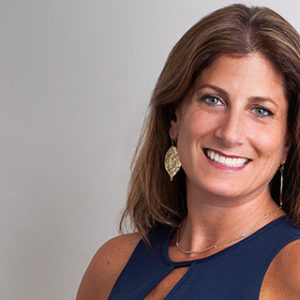
Embracing change has never been an issue for me. Hopefully, other marketers feel the same because marketing is about to change in a fundamental way. The dream of putting the right message in front of the right person at the right time is about to be realized on a massive scale. This is the 1:1 marketing idea that Don Peppers & Martha Rogers wrote about 18 years ago finally coming true. Why am I so confident?
First, “addressable TV” is right around the corner and this means our set-top boxes will no longer be dumb terminals. Instead these devices will be smart, feeding our preferences back to broadcasters who in turn will aggregate and sell our “eyeballs” to the highest and most relevant bidder. This is not just good for marketers. It will also be good for consumers in that we would no longer see irrelevant ads–for me, that means no more ads for feminine hygiene or baby products when an ad for a paddle tennis racquet or a new off-Broadway show would actually be relevant.
Second, outdoor is about to become smart as digital displays receive information about us (with our permission of course!) via bluetooth or Wifi and therefore can serve relevant messages in a flash. Third, retailers use of beacons will enable our mobile devices to receive personalized messages again on a permission basis in real-time inside or outside of their stores. And finally, the ultimate reason you can trust this prediction is that this sort of highly targeted real-time messaging is already happening online and on our mobile devices!
Ultimately, behind all of this wizardry will be a marketing operating system like the one developed a few years ago by MediaMath, a leader in what is currently called “programmatic” marketing. These operating systems will enable marketers to tie just about every penny of their ad spending to measurable outcomes, the ultimate dream of our soon to be transformed industry. So it is in this lofty context that I encourage you to read my extensive interview with Rachel Meranus, SVP of Marketing for MediaMath.
Drew: Can you talk a little bit about MediaMath and your growth in the last few years?
We’ve come a long way since we made industry headlines when we introduced the first demand-side platform (DSP) in 2007. Today, we’re one of the leading change agents in the advertising industry, helping the biggest brands and agencies evolve through programmatic buying and maximize their marketing performance and ROI. We are on the path of making marketing a software function and continuing to innovate in the industry by adding capabilities to our TerminalOne Marketing Operating System. For example, we recently introduced closed-loop attribution functionality, in which T1 ingests attribution data to optimize the bidding and decisioning, enabling advertisers to realize the full benefits of advanced attribution in an RTB environment, and automated guaranteed deals to facilitate automated media buys that are traditionally done directly with a publisher. We are currently developing our propriety cookieless cross-device targeting and measurement solution, and continually enhancing our data management, creative optimization, and analytics offering.
In addition to growing the scope of our technology, we are experiencing incredible human capital growth – more than doubling our number of employees in the past year and on track to do the same this year. In June, we raised more than $175 million in additional funding; funding that will support our rapid global growth. We have put experts on the ground around the world with our recent office openings in Australia, Brazil, France, Japan, and Singapore, and in 2015, MediaMath will relocate its New York City headquarters to more than 100,000 square feet spanning three floors of the new 4 World Trade Center.
Drew: Can you give an example of a client that is doing amazing things with programmatic?
Many of our clients – both agencies and brands – are seeing success with programmatic tactics, leveraging geo-targeting, look-alike modeling, and even building proprietary models to identify new prospects through TerminalOne. One example of a client that is accelerating their programmatic efforts is ShopStyle by PopSugar, the social shopping and fashion website. They were looking to leverage programmatic media to create scalable return on ad spend, with a focus on campaigns in both the middle and lower funnels. Using our TerminalOne Marketing Operating System and working with our OPEN partner AddThis, ShopStyle was able to create more robust and scalable profiles based on user data and implement more granular targeting around behavior and contextual variables. Additionally, utilizing FBX, ShopStyle by PopSugar was also able to expand its retargeting pool and tactics beyond traditional display.
Drew: The big media buying agencies are all over programmatic and have been for a while now. This doesn’t seem to be case with most brands and their CMOs. Why the understanding gap and why do you think it is so important that CMOs understand the power of programmatic?
We see quite a range when it comes to a CMO’s understanding and level of sophistication with the technology. Some jump right in and get their hands dirty. Others are treading lightly on unfamiliar territory.
Traditionally, agencies had more exposure to the ins and outs of digital media buying, but for many brands and their CMOs, they haven’t had this much control over or transparency into their digital media buying. There is still a lot of confusion about how the technology works, but it’s critical for CMOs to understand the power of programmatic, especially when more marketing dollars are shifting to digital.
With a central marketing operating system, CMOs gain the visibility into how their money is being spent, the impact of their media buying decisions, and the ability to identify real-time opportunities with their audiences. Furthermore, the more CMOs embrace programmatic – within their own brands or together with their agency partner – the greater opportunity they will have deploying first-party data, integrating with internal systems, and normalizing marketing across disparate media types for greater performance.
Drew: MediaMath has made a concerted effort to engage CMOs through your partnership with The CMO Club. Can you talk about your approach to this partnership?
The value of our partnership with The CMO Club is two-fold. Firstly, we are able to learn, first-hand, from CMOs across a variety of industry verticals what is keeping them up at night. We are able to be on the pulse of the major challenges that CMOs face, what they view as the biggest opportunities, and how they’re building out their organizations to keep up with the evolution of digital.
Secondly, the CMO Club gives us tremendous exposure to an engaged, interested audience of CMOs, allowing us to educate and inform them on programmatic marketing, which is where our expertise lies. We’re helping them to understand how our technology applies to their broader goals and addressing the challenges that they face on a daily basis.
Drew: What’s the hardest part of trying to engage CMOs and what kinds of things are you doing to cut through?
When it comes to engaging CMOs, we look to explain why programmatic should be the basis of any digital marketing strategy and have the lion’s share of digital budgets. This requires us to explain how the technology fits into their stack, the new or different skillsets that are needed, and the ideal team structure that should be put in place to fully take advantage of a central operating system.
However, there are steps that we’re taking to help educate CMOs about the opportunities, what they can do to maximize the return on investment in the short term – from their current digital efforts, as well as what they can put in place for the longer term. We’re educating them through tailored content, which varies depending on their level of experience with and understanding of programmatic, case studies, and interactive training sessions.
Another way that we’re doing that is by working with brands’ agency partners who bring trading best practices, cutting-edge tools, pooled media buying, and data co-ops into the relationship. Programmatic technology creates new roles for agencies in which they are able to leverage proprietary modeling and optimization approaches and data-driven creative services, among others. This benefits the client outcome and that’s what has led to more CMOs having a greater interest in and understanding of programmatic.
Drew: As a B2B brand, what role does social media play in your marketing mix?
Social media is an important part of our marketing mix, which we use to raise brand awareness, identify influencers, and engage brand advocates in a competitive space. As a B2B brand, LinkedIn is particularly beneficial to engage influencers, seed our messages in specialized groups, and participate in timely and topical conversations. Furthermore, as social channels expand their programmatic capabilities, we are able to leverage our partnerships with them. For example, we use TerminalOne’s decisioning engine and data sources to power campaigns on Facebook and engage target tailored audiences on Twitter. For these channels, we regularly leverage our original content – blog posts and research – and news to spark conversations that can generate new leads.
Drew: MediaMath recently unveiled new positioning. Talk me through what led you to make this change and some of the challenges you faced along the way.
The industry has been moving at such a quick pace, with new players emerging seemingly every day. The industry has reached a level of sophistication in their understanding of technology and is recognizing that a complex chart of logos to represent today’s online advertising ecosystem isn’t the answer to their need for scalable marketing. Rather, they are realizing that it’s achievable through technological unification and a flexible, open platform. Our new brand message, ‘Performance Reimagined. Marketing Reengineered,’ epitomizes both our goal-based approach to drive transformative marketing results, as well as the technology platform that powers it.
Drew: What advice would you offer a fellow marketer who was about to consider a rebranding campaign?
Evolution is inevitable, especially in the fast-changing world of digital marketing. Therefore, when it comes to a rebranding campaign, there are a few essential steps to consider before diving in, including the need to:
- Gauge market readiness for change and have a clear understanding of how your brand is perceived in market. This requires research and due diligence with a brand’s key stakeholders – current employees, clients, prospects, and industry influencers, as well as having a pulse on the competition.
- Have a clear, concise mission statement to which everything you do as part of the rebranding maps.
- Know how this change will impact your company and prepare communication plans – internal and external – that also include a roadmap for what will happen post launch.
- Manage expectations. Shifting perceptions and seeding a market with a new message takes time.
- Agree upon the metrics by which you evaluate success on an ongoing basis and establish a feedback loop to capture reactions to the effort, including the accuracy of your mission statement.
Drew: Given that MediaMath operates in a relatively new field, do you think bringing greater awareness to the field itself is just as important as marketing MediaMath?
We do and it’s the reason why we are so bullish on our educational initiatives. We introduced our educational arm, the New Marketing Institute (NMI), in 2012. It’s an extension of our mission to educate, empower, and engage a new generation of digital marketing professionals, providing an educational platform and different levels of certification. NMI’s team meets with these professionals where they are and brings our best-in-class onboarding process to them – best practices, access to a central repository of knowledge, and an understanding of the digital marketing technology in which their employers have invested.
We also recommend marketers visit our OPEN portal, which includes a Partner Marketplace, enabling them to gain clarity around the vast number of data, media and technology providers that comprise the ecosystem. By understanding the value proposition and differentiators among partners, they are armed with the information and tools to make more informed buying decisions.
Drew: Your product is really good at helping brands track performance of their marketing dollars. How do you measure your own marketing success?
We measure our marketing success based on a number of factors, including leads generated, opportunities that can be mapped back to specific efforts, engagement with our original content (blog posts and research), how our messages resonate across social channels, and, of course, revenue.
Disclosure: I’m proud to note that Renegade created the “Train Your Brain” CMO engagement program for MediaMath.


